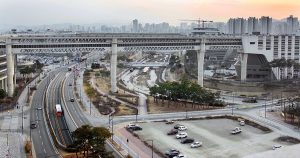Kim Tae-nyeon, floor leader of the ruling Democratic Party of Korea, suggested last week the relocation of key organizations such as the country’s National Assembly and the presidential Blue House from Seoul to Sejong City, about 120 kilometers to the south.
The background of Kim’s proposal, which is strongly backed by his party, is simple and clear: South Korea needs to address the concentration of major social resources such as capital, jobs, and cultural facilities in Seoul and the neighboring areas. The clustering around Seoul causes an inequality among other regions across the country.
According to the Statistics Korea, the population of Seoul and nearby Gyeonggi province is estimated to be about 25.96 million this year, which is more than the population of the rest of South Korea combined at 25.82 million.
Meanwhile, the Seoul metropolitan area accounts only for about 12 percent of the nation’s total area.
Already, half of South Korea’s total population is concentrated in one place, and that trend is getting worse. If this continues, dozens of cities in farther flung areas could “disappear,” without enough residents to keep them functioning.
In fact, the Korea Employment Information Service estimated as of the end of May that 105 out of 228 cities across the country are at risk of disappearing due to a low population, a 6 percent increase from the previous year. Even some popular tourist destinations are on the verge of experiencing the same problem.
Some might wonder if this is because of the country’s low birth rate, but many people have left smaller cities and headed to Seoul and neighboring areas, according to Statistics Korea. The net inflow of people into the Seoul metropolitan area between March and April this year stood at 27,500 – more than double the figure in the same period last year.
As the figures above show, the issue of over-concentration in Seoul is real and many in the country recognize it. A poll conducted by Realmeter Korea on July 22 showed that 53.9 percent of respondents said South Korea should relocate some core functions from Seoul to diversify resources to other geographic areas.
But there is broader context for the recent proposal made by Kim of the Democratic Party. His suggestion for relocating parts of South Korea’s governance apparatus came amid growing public anger over the failure of the ruling Democratic Party’s real estate policy, which has resulted in soaring property prices in Seoul and nearby areas.
Critics believe the Democratic Party’s proposal is timed to quench public outrage.
Opposition political parties such as the United Future Party of Korea and the Justice Party raised a critical voices about the move, and some civic groups, including the Citizens’ Coalition for Economic Justice, also called it a make-shift plan.
It is evident that simply moving administrative functions from Seoul to a new city will not disperse the population of the Seoul metropolitan area. The example of Sejong City already proves that. It was founded in 2007 to serve as the administrative capital, with a plan to relocate government functions outside of Seoul. Yet progress has been slow and it has not siphoned off many residents from Seoul; Sejong City’s population is just around 300,000. If the government hopes to attract people to a new place, it must provide other incentives such as jobs and cultural and educational facilities.
The Democratic Party has talked about “balanced development” as the impetus behind its latest proposal, but that term has not been clearly defined. Relocating the National Assembly and the presidential Blue House from Seoul to other places will not alone be the key to more equitable development.
The Democratic Party has formed a task force to conduct a feasibility study for Kim’s proposal and held the first meeting. No details have been revealed yet, but if the ruling party is serious about its proposal, concrete measures need to be devised and explained clearly in order to gain public support. To attract private firms, which will be followed by jobs and people, the government could consider incentives such as tax benefits.

































